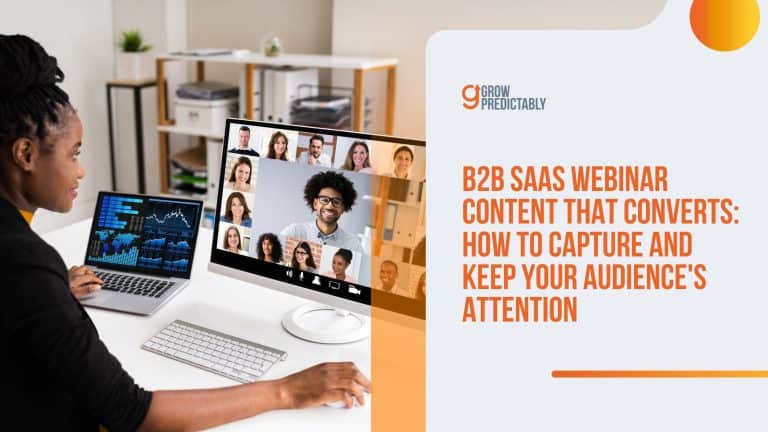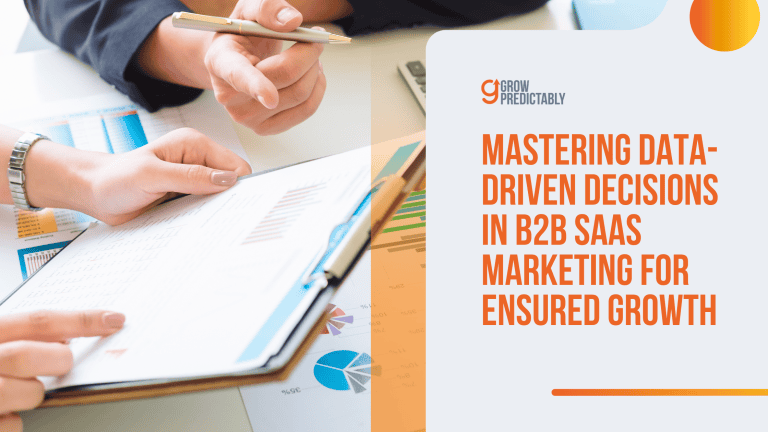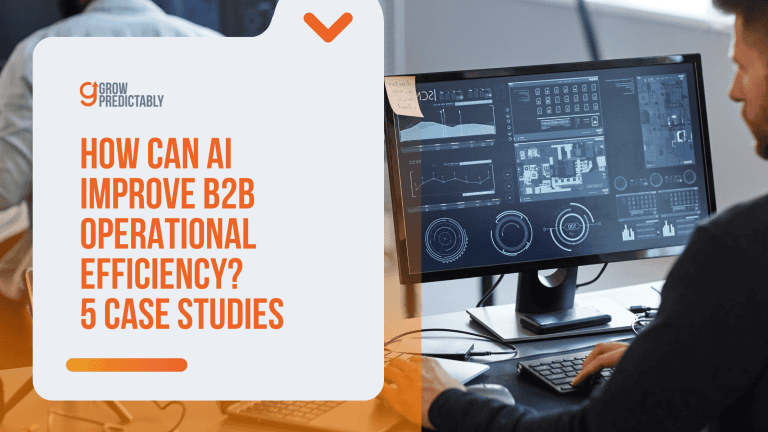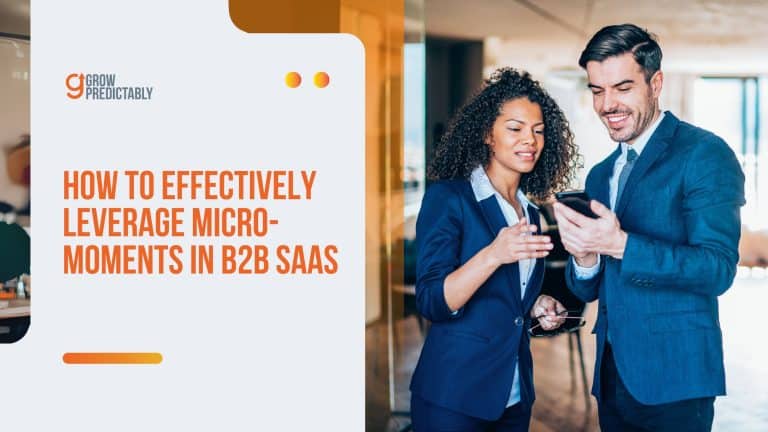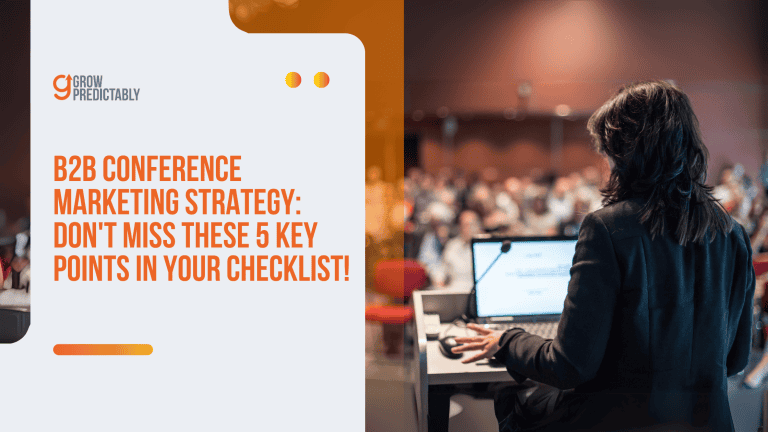7 ‘Must Do’ Tactics – B2B SaaS Lead Generation for Micro SaaS
Struggling to generate quality leads for your B2B Micro SaaS?
Many founders waste time on the wrong strategies and get poor results.
But here’s the truth: the best lead generation tactics work without burning your budget or requiring massive ad spend.
In this guide, you’ll get seven battle-tested strategies that bring leads straight to your inbox.
Ready to see what actually works? Let’s dive in.
Understand Your Ideal Customer Profile First!
Implementing effective SaaS lead generation strategies should be a vital piece of any SaaS brand’s growth strategy.
However, understanding your ideal customer first is crucial when selling your Micro SaaS product.
To help form clearer insights regarding who their ideal customer is, marketers use different tools.
Today, we’re going to explore one tool that many digital marketers leverage.
The first and most vital step in this process is using the Customer Avatar Canvas, an effective tool that helps you create a detailed profile of your potential buyer or target audience.
This is not just the starting point; it’s the foundation that will guide every strategy you develop and decisions you make in your lead generation efforts.
With a clear picture of who you’re targeting, your lead generation efforts become more focused, efficient, and effective.
The Customer Avatar Canvas simplifies the complex task of defining who your customers are, what they need, and how best to reach them.
Consider it a critical part of your lead generation tools.
Let’s dive into how you can build your customer profile using this powerful framework.

The Basics – Who Are They?
Start with these core details:
- Job title and role
- Company size (usually 1-50 employees for Micro SaaS)
- Industry
- Income level
- Age range
- Location
- Tech skills level
Get Inside Their Head
What keeps them up at night?
Write down:
- Their main work problems
- Goals they want to hit
- What they’re scared of
- What success looks like to them
- Tools they already use
- Where they hang out online
How to Research Your Avatar
It doesn’t stop at identifying who your customer avatar is; employing this tool together with thorough and regular research, including using search engines, regarding your target audience is a must.
Here are practices to keep when researching your avatar:
Talk to Real People
- Message 10 potential customers on LinkedIn
- Join Facebook/Slack groups where they hang out
- Ask questions in Reddit communities
- Run quick Twitter polls
Look at Data
- Use search engines like Google Trends to spot what they search for
- Check LinkedIn Sales Navigator for job title patterns
- Read comments on competitor products
- Study reviews in your niche
Example Avatar: Sarah the Solo Consultant
- 35 years old
- Makes $85K/year
- Runs her own marketing consulting business
- Uses basic tech but isn’t super technical
- Needs help managing client projects
- Worried about looking professional to clients
- Hangs out in marketing Facebook groups
- Follows productivity influencers on Twitter
Turn This Into Marketing Gold
Once you know your avatar:
- Write ads that speak directly to their problems
- Hang out where they hang out
- Use words they use
- Build features they actually want
- Price based on their budget
Remember: Don’t try to please everyone.
Pick one avatar and nail it.
You can always add more later.
This stuff isn’t fancy – but it works.
The clearer you are about who you’re selling to, the easier everything else becomes.
How to Get Started with B2B SaaS Lead Generation for Micro SaaS
Lead generation is the lifeblood of any B2B micro SaaS business.
Without a steady stream of new leads, it’s challenging to generate quality leads and growth stalls.
Let’s break down some essential tactics to help you boost your lead generation efforts.
1. Optimizing Landing Pages
Your landing page is often the first impression potential customers have of your product.
It needs to grab their attention and clearly communicate the value you offer.
An optimized landing page turns visitors into leads by making it easy for them to take the next step.
How to do it:
- Construction Scheduling Software: Construction companies landing on your page should immediately see how your software solves their scheduling headaches. Use visuals of a stress-free construction site thanks to optimized schedules. Offer a free template download for project scheduling to capture leads.
- Healthcare Clinic Management Software: For healthcare professionals, highlight the ease of managing patient records and bookings. Showcase testimonials from clinics that have reduced administrative time. Offer a free trial that integrates with their existing systems to hook them in.
- Education Enrollment Platform: Training providers need to see how you simplify student management. Use before-and-after screenshots showing messy spreadsheets vs. your organized dashboard. Offer a free demo with sample data to let them experience the ease of use.
Landing pages aren’t rocket science.
Most Micro SaaS companies mess them up by trying to be too fancy.
Here’s what actually works…
The Basics That Convert
When it comes to SaaS lead generation strategies, your landing pages are a key piece.
Your landing page needs three things:
- A clear headline that matches what your visitor expected
- Benefits (not features) that speak to their problems
- A single, obvious call-to-action (CTA)
When optimizing landing pages, remember that social proof is your friend. To leverage social proof, add these near your CTAs.

As seen in the sample above, Monday.com uses this same approach well.
A breakdown of their long list of clients is displayed on their page, this is also followed up with a short client testimonial that helps readers envision the possibilities they can make with the platform.
- Small logos of companies using your product
- A short quote from a happy customer
- Number of active users/customers
Mobile Speed Matters
Google says 53% of visitors leave if a page takes longer than 3 seconds to load. (Source)
Quick fixes include compressing your images, removing unnecessary plugins, and using a good hosting service.
The Money-Making Elements
Also, it’s always a landing page best practice to ensure that the following elements can be seen above the fold.
- Your main CTA button (make it stand out)
- A simple form (3 fields max)
- Your strongest benefit statement
2. Content Marketing
Content marketing, coupled with search engine optimization, attracts leads by providing valuable information that addresses your target audience’s pain points.
It establishes you as an authority and builds trust, enhancing your visibility across search engines.
How to do it:
- Construction Scheduling Software: Publish blog posts on topics like “5 Ways to Avoid Costly Construction Delays” or “The Ultimate Guide to Construction Project Management Software.” Offer checklists and templates as lead magnets within these posts.
- Healthcare Clinic Management Software: Create content around topics like “HIPAA-Compliant Telemedicine Solutions” or “Streamlining Patient Communication.” Host webinars on best practices for digital healthcare management and collect leads through registration.
- Education Enrollment Platform: Develop articles like “Boosting Student Enrollment with Effective Marketing” or “The Future of Online Learning Platforms.” Offer a free e-book on student engagement strategies to capture leads.
Create cornerstone content pieces that are in-depth and evergreen to help convert prospects into sales qualified leads. These are foundational resources you can repurpose into smaller blog posts, social media updates, and email content.
Getting leads through content marketing isn’t rocket science, but you need a solid plan.
Creating different content types for different customer journey stages is a smart move that any micro SaaS business should learn from the get-go.
Top of Funnel (New Visitors)
- Blog posts explaining common industry problems
- Short YouTube videos showing quick tips
- Infographics that break down complex topics
Middle of Funnel (Interested Prospects)
- Detailed case studies showing real results
- Comparison guides between you and competitors
- Free templates they can use right away
Bottom of Funnel (Almost Ready to Buy)
- Product demos and tutorials
- Customer success stories
- ROI calculators
Distribution Matters More Than Creation
In the realm of SaaS lead generation strategies, distribution matters just as much as creation.

Don’t just post and pray. Aim to convert your audience into marketing qualified leads.
Get your content seen:
- Share in relevant LinkedIn groups
- Post on specific subreddits where your users hang out
- Answer related questions on Quora
- Email your list with new content
- Join Slack communities in your space
3. Social Media
Social media helps you connect with potential customers, build brand awareness, and drive traffic to your website.
It allows you to engage in conversations, share valuable content, and build a community around your product.
But don’t just use social media to broadcast your message.
Engage in conversations, answer questions, and participate in relevant groups and discussions.
How to do it:
- Construction Scheduling Software: Join construction industry groups on LinkedIn and Facebook. Share project management tips and insights, and subtly mention how your software can help. Run targeted ads showing the benefits of efficient scheduling.
- Healthcare Clinic Management Software: Use Twitter and LinkedIn to share articles on healthcare technology and patient care. Participate in discussions about telemedicine and digital health solutions.
- Education Enrollment Platform: Engage with educators and administrators on platforms like Twitter and Facebook. Share success stories from schools using your platform, and run polls to understand their biggest challenges.
Here’s how to get real leads from social media without wasting time or looking like a desperate salesperson.
I’ve helped dozens of Micro SaaS founders nail this, so let me share what actually works.
Pick Your Platforms (But Don’t Try to Be Everywhere)

For B2B Micro SaaS, you only need to focus on:
- LinkedIn: Your main platform for reaching decision-makers.
- Twitter: Great for quick tips and building authority.
- Reddit: Perfect for answering questions in your niche.
- Slack communities: Direct access to your target users.
Avoid Facebook and Instagram; they’re often unproductive channels for B2B SaaS marketing.
Focus on platforms that directly engage your target audience.
LinkedIn: Your Lead Generation Home Base
- Optimize your profile:
- Add “helping [target customer] with [specific problem]” to your headline.
- Write your About section focusing on customer results.
- Post 2-3 times weekly about customer problems and solutions.
- Direct outreach that works:
- Find 2nd connections who match your customer profile.
- Send personalized connection requests mentioning shared interests.
- Wait 2-3 days before sending any pitch.
For example, Sarah from InvoicePal got 12 trial signups in one month just by commenting helpfully on LinkedIn posts about invoicing problems.
Twitter Strategy That Actually Works
Don’t just tweet random stuff.
Instead:
- Share specific tips for solving common problems
- Create short threads (3-5 tweets) about customer success stories
- Reply to questions in your niche with helpful answers
- Use $SAAS and relevant hashtags moderately
Reddit: The Hidden Gold Mine
To enhance your lead generation efforts with Reddit, implement these tricks:
- Find subreddits where your customers hang out
- Answer questions thoroughly (no promotional stuff)
- Add your tool as ONE possible solution among others
- Host AMAs after building a reputation
REMEMBER: Social media works best when you help first and sell second.
Focus on solving problems, and the leads will follow naturally.
4. Email Marketing
Email marketing allows you to nurture leads, provide personalized content, and drive conversions.
It’s a direct line of communication with potential customers.
How to do it:
- Construction Scheduling Software: Create an email sequence for new leads that provides tips on construction scheduling, shares case studies, and offers a discount on your software.
- Healthcare Clinic Management Software: Send emails with industry updates, tips on patient management, and information on new features in your software.
- Education Enrollment Platform: Develop a newsletter for educators with articles on teaching strategies, updates on education technology, and exclusive deals on your platfor
However, since you’re in B2B, you must remember that your email recipients are decision-makers who are already busy sifting through countless emails daily.
With that, standing out is always a must—check out the quick tips below to do just that.

If you’re running a small SaaS company, you probably don’t have time to manually send emails to every lead.
That’s where email automation comes in.
Let me show you how to set it upright.
The Welcome Series (First 7 Days)
Your first email sequence needs to make new subscribers feel at home.
Here’s what works:
- Day 0: “Thanks for joining” email with a quick win
- Day 2: Share your best how-to content
- Day 4: Customer success story
- Day 7: Soft pitch for your free trial
According to Campaign Monitor, welcome emails get 4x more opens than regular campaigns.
Don’t waste this chance.
Educational Nurture Sequence (Days 8-30)
This is where you build trust.
Break down complex topics into bite-sized lessons:
- Problem → Solution format
- 2-3 minute read max
- One clear takeaway per email
- Link to longer content pieces
MailChimp data shows educational emails get 50% more clicks than promotional ones.
Bombarding your leads with constant sales pitches. Focus on providing value, building relationships, and only promoting your product when it’s relevant.
Tools That Work for Small Teams
For most micro SaaS companies, these tools hit the sweet spot:
- MailChimp: Good up to 2,000 contacts, free plan available
- ActiveCampaign: Better automation, starts at $29/mo
- ConvertKit: Built for creators, from $29/mo
5. Educational Webinars and Live Events

Webinars and live events are powerful lead-generation tools because they allow you to effectively generate leads, engage directly with your audience, demonstrate your expertise, and answer questions in real-time.
Webinars can generate a significant number of qualified leads.
Studies show that businesses can increase lead generation by up to 73% through webinars. (Source)
How to do it:
- Construction Scheduling Software: Host a webinar on “The Top 5 Project Management Mistakes and How to Avoid Them.” Offer a free consultation to attendees.
- Healthcare Clinic Management Software: Conduct a webinar on “Telemedicine Best Practices for Small Clinics.” Offer a free trial of your software to participants.
- Education Enrollment Platform: Organize a live Q&A session with educators on “Engaging Students in a Virtual Classroom.” Offer a free resource pack to attendees.
Webinars work great for getting leads, but only if you do them right.
Here’s what actually gets results.
Pick Topics That Matter
Start with common problems your software fixes.
- Check your support tickets for recurring questions.
- Ask current customers what they struggled with before finding you.
- Look at competitor webinar topics (and do them better).
Structure Your Webinar Flow
- First 5 mins: Quick intro + what they’ll learn.
- Next 20-25 mins: Main teaching/demo.
- Last 10-15 mins: Q&A.
- End with clear next steps.
Make It Interactive (This Really Works)
When your target prospects join in webinars and other live events, sometimes it can get boring sitting in front of a screen for a prolonged period.
Here, it’s important that you do not overlook engagement.
For successful lead generation, make things interactive by leveraging elements like these:
- Run polls every 10-15 minutes
- Do live software demos
- Answer questions as they come in
- Share real customer examples
6. Referral Marketing Strategy
Referrals are one of the most effective lead-generation methods because they come from trusted sources.
People are more likely to try a product recommended by a friend or colleague.
How to do it:
- Construction Scheduling Software: Offer a discount to existing customers who refer a new client. Provide both the referrer and the new client with a bonus.
- Healthcare Clinic Management Software: Create a referral program that rewards doctors and clinics for recommending your software to their peers.
- Education Enrollment Platform: Offer a free premium feature to schools that refer new customers.
Make it easy for your existing customers to refer new leads. Provide them with referral links, discount codes, and other incentives.
Why Referrals Work Better for Micro SaaS
Numbers don’t lie – referred leads convert 4x better than other marketing channels (Nielsen).
That makes sense, right?
People trust their friends more than ads.
Here’s what makes referrals great for small software companies:
- It costs almost nothing to run
- Higher quality leads (they’re pre-vetted by customers)
- Faster sales cycle (trust is already there)
- Better retention rates
Pick Your Reward Structure
Like how Paypal does it, anyone who participates in Paypal’s referral program enjoys their two-sided rewards system.
As seen in the sample below, when a referral successfully joins Paypal, both the referrer and the referral enjoy a $10 reward.

But you can also try:
- Give points/credit to both sides (works best).
- Example: $50 credit for referrer, $50 off for new customer.
- Cash rewards work, too ($100 is typical for B2B SaaS).
Make Sharing Dead Simple
- Create a unique link for each customer.
- Add share buttons for email/LinkedIn.
- Write the pitch for them (they can copy/paste).
Aside from leveraging optimized landing pages on your website, maximizing email marketing best practices to make your active users aware of your referral program is also a common strategy.
Here’s an email template that works…
Subject: Give $50, Get $50 – Share [Your Product]
Hi [Name],
Noticed you’ve been using [feature] a lot lately – awesome!
Want to get $50 credit? Just share [Product] with others who’d find it useful. They’ll get $50 off too.
Your personal link: [referral URL]
Thanks!
[Your name]
REMEMBER: A good referral program isn’t about being fancy.
It’s about making it easy for happy customers to spread the word.
Start small, measure what works, and grow from there.
7. Paid Advertising
Paid advertising allows you to reach a targeted audience quickly and efficiently.
It can drive traffic to your landing pages and generate leads even when your organic efforts are still gaining traction.
Throwing money at ads without a clear strategy. Define your target audience, choose the right platforms, and track your results to optimize your campaigns.
How to do it:
- Education Enrollment Platform: Advertise on educational websites and social media platforms used by educators and administrators.
- Construction Scheduling Software: Run targeted ads on LinkedIn and industry-specific websites promoting your construction scheduling software.
- Healthcare Clinic Management Software: Use Google Ads to target keywords related to telemedicine, patient management, and healthcare technology.
Paid ads for B2B micro SaaS businesses can be straight and simple, too.
I’ve managed over $2M in ad spending for software companies, and I’ll share what works.
Start Small, Test Fast
- Begin with $500-1000/month
- Split between Google Ads and LinkedIn
- Test 3-4 ad variations max
- Check results weekly
Google Ads Quick Setup
- Target exact-match keywords first
- Bid on your competitors’ names
- Start with search ads only
- Set daily budgets at $15-30
Real numbers from a client: $800 spent on Google Ads brought 42 leads at $19 each for their project management tool.
LinkedIn Ads That Work
- Message ads: 2-3x better response than regular ads.
- Target by job title + company size.
- Keep bids under $8 per click.
- Use custom audiences from your email list.
Track These Numbers
- Cost per lead (CPL)
- Lead-to-trial ratio
- Trial-to-paid ratio
- Customer acquisition cost (CAC)
Okay, here’s a simple ad spend tracking template that you can try or customize to your own need:
| Week | Ad Spend | Leads | Trials | Customers | CPL |
|---|---|---|---|---|---|
| 1 | $250 | 12 | 3 | 1 | $20.83 |
| 2 | $250 | 15 | 4 | 1 | $16.67 |
FAQs
Clarity Equals Conversions
What is the biggest mistake in Micro SaaS? Trying to sell to everyone.
We’ve explored how to pinpoint, research, and engage your most valuable customers using real-world data.
Nail this, and everything from your messaging to product development will fall into place.
Your next step: Spend an hour today researching comments or forum discussions in your industry. What problems are popping up most frequently?
This is your goldmine.
Let’s talk: What has been the most surprising insight you’ve learned about your target customer so far? Share in the comments!
Knowing your audience on a deep level is a growth superpower.
Use it wisely, and watch your SaaS take off—even beyond the scope of lead generations.



